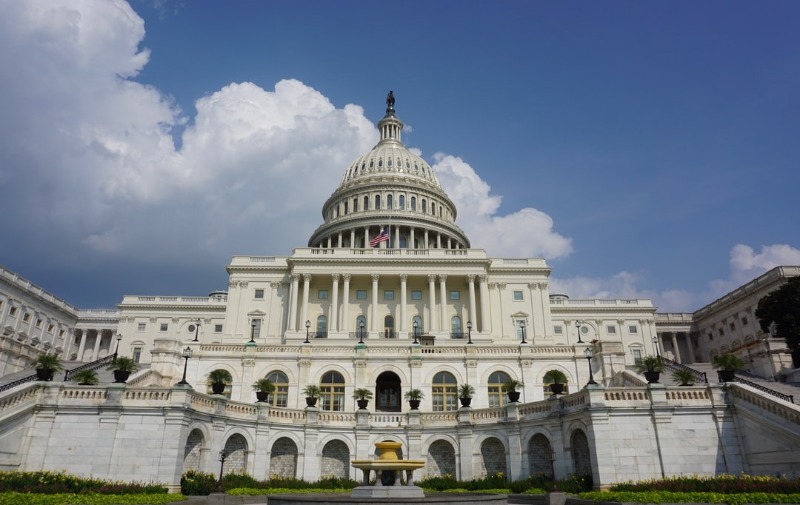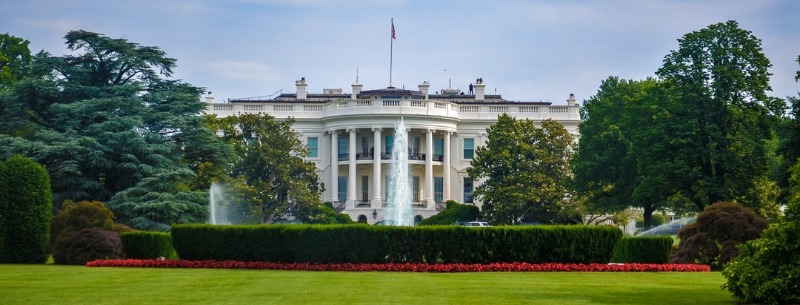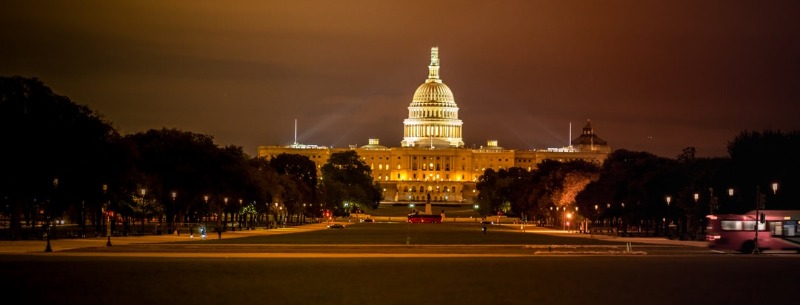As many people know, the United States Government is divided into three separate but equal branches. These branches are the executive branch, the judicial branch, and the legislative branch. Most Americans learn the details of each of these three branches at a very young age, but just as placing a face to a person’s name adds an element of understanding, so does visit a governmental branch’s building. The obvious value of getting to see the beautiful architecture of these buildings that represent the government that all Americans grow up hearing about pales in comparison to the more sentimental value of standing in front of the Capitol Building where the lives of every American is affected every day by American leaders or standing before the White House where our President lives and carries out his executive duties. Each of the three houses of government may be toured by the general public but touring the White House takes a little more time to clear the red tape for security reasons.
US Capitol Building
The United States Capitol Building represents the legislative branch of the US Government. The Capitol Building is separated into three parts. The House of Representatives and the Senate are on either side of the middle section which is open to the public. The middle section of the US Capitol Building includes the huge dome-shaped rotunda that distinguishes this building from every other building in the city.

Narrated guided tours of the middle section of the U.S. Capitol Building is offered free of charge. If you stand in the middle of the rotunda room in the Capitol Building and look up, you will see one of the most beautiful and exciting sites in the Washington D.C. area. Around the bottom of the dome in this room, you will see a wrap around fresco mural called “Frieze of American History”. This mural, painted by Brumidi and Filippo Costaggini, depicts 19 scenes from American history (from Christopher Columbus to the Wright Brothers). The middle section of the US Capitol Building also contains a statue chosen, designed, and built by each state. Each state sends a statue of the person that most represents that state. Some examples are the statue of Sam Houston from Texas, Ronald Reagan from California, and Samuel Adams from Massachusetts. These statues are changed as often as the state wishes. The only restriction is that the statue must be either bronze or marble.
The remaining sections of the US Capitol Building (House of Representatives and Senate) are very important to the workings of the government but are not toured nearly as often as the middle section. The House of Representatives houses Congressmen from each state. The number of Congressmen from each state depends on the population of the state. The Senate, on the other hand, houses two representatives from each state regardless of the state population. This form of the legislative body is called a bicameral, meaning two houses.
White House
The White House, located at 1600 Pennsylvania Avenue, represents the executive branch of the US Government. The White House is home and office to the President of the United States. From the offices of this building, the president commands the United States military, performs his part in the legislative process, and performs his role as Head of State (chief diplomat).

The White House was built in the 1790s, less than twenty years after the office of president was established by the U.S. Constitution. The White House was built during the presidency of John Adams and has been the home of every president since. Much of the interior of the White House was burned during the War of 1812 against Great Britain but it was quickly rebuilt.
Narrated guided Tours of the White House are available but are not as simple as just walking through the front door. The White House is viewable from the fence but no one is allowed through the gate without proper clearance. To tour the White House you must first meet the following guidelines:
- Must be part of a group of ten or more
- Must send a request via State Congress
- Must adhere to up to six month waiting period
- All Tours must be led by a cleared guide
Supreme Court Building
The Supreme Court Building represents the judicial branch of the US Government. In this building is seated the Chief Justice and eight Associate Justices. These Justices are given a lifetime appointment by the President but must be approved by the Senate. The Supreme Court is the highest judicial body in the United States. The primary role of the Supreme Court is to determine if legislation brought before them is legal according to the U.S. Constitution.

The Supreme Court Building is located at First Street, directly across the road from the U.S. Capitol Building. The public face of the Supreme Court Building is made from marble with several statues and inscriptions. Each statue has an inscription that is related to the idea of equal justice for all Americans. Some of these inscriptions include, “Equal Justice Under Law” and “Justice the Guardian of Liberty”. The two statues in front of the Supreme Court Building represent the “Contemplation of Justice” and the “Authority of Law”.
The Supreme Court Building can be toured free of charge Monday through Friday. Some of the attractions that tourists enjoy in this building include rotating exhibits, educational programs (for tour groups), and a theatre that features films about the Supreme Court. You may also sit in on the daily hearings of the Supreme Court.
Other Government Buildings in Washington D.C.
Library of Congress
The Library of Congress is used as a research library for members of the United States Congress. After much of the original Library of Congress was destroyed during the War of 1812 against Great Britain, the current Library was donated by the private collection of Thomas Jefferson. Because of this generous donation during a time that books were much more valuable than they are today, the building is called the Thomas Jefferson Building. The Library of Congress is open to the public but only Congressmen and ranking members of the government may check out books.

Some of the famous holdings of the Library of Congress include the rough draft of the U.S. Declaration of Independence and one of only four existing Gutenberg Bibles along with more than thirty million other books and publications. Be sure to see the Great Hall while you’re at the Library of Congress. This room is among the most spectacularly designed rooms in the world.
Touring the Library of Congress is free of charge and offers many programs and attractions. Library of Congress visitors may enjoy attractions on three floors.
The first floor includes:
- Library of Congress Gift Shop
- Restroom/Cloakroom
- Visitor Theater/Guided Tours
- Georgia & Ira Gershwin Room
- Bob Hope Gallery of American Entertainment
- Coolidge Auditorium & Whittall Pavilion
The second floor includes:
- Bronze Doors
- Orientation Galleries
- Minerva’s of War and Peace
- Great Hall (beautiful must-see room)
- Main Reading Room
- Giant Bible of Mainz & Gutenberg Bible
- Special Purpose Rooms
- Members/Congressional Reading Room
The third floor includes:
- East Corridor:
- Visitor’s Gallery
Minerva of Peace
- Visitor’s Gallery
- North Corridor:
- * Exploring the Early Americas
- South Corridor:
- * Creating the United States
* Jefferson’s Library
- * Creating the United States
- South Gallery
- Rotating Exhibits
National Archives
The National Archives Building is home to some of the most important documents in U.S. history. After the United States National Archives and Records Administration (NARA) was established in 1934, these documents were moved to one located and they became open for the public to view. Some of the documents that are available for view at the National Archives Building include the Bill of Rights, The United States Constitution, the Declaration of Independence, the Emancipation Proclamation, the Magna Carta, and many more. The National Archives Building is located next to the National Mall, across the street from the Smithsonian Natural History Museum.
The interior and exterior of the National Archives Building were beautifully designed. The room that holds these documents is guarded by a tall, beautiful metal fence that adds a sense of sacredness to the room. The room in the National Archives that contain these priceless documents is heavily guarded at all times and no flash photography is allowed due to the fragile nature of these old documents.
Bureau of Engraving and Printing
Bureau of Engraving and Printing is where all of the paper money in the United States is made. The coins are made at the United States Mint. The Bureau of Engraving along with the Mint works in partnership with the Federal Reserve to create and regulate the value of the American Dollar. The Bureau of Engraving and Printing also creates certificates, government ID cards, and several other items that require security in creating. The Bureau of Engraving and Printing visitor center is a popular attraction for tourists. From this visitor’s center, you can take advantage of a free forty-minute tour of the facility. In this tour, you can see millions of dollars being made as you walk past the production floor. This tour also includes an exhibit gallery, a short film, and a shop for buying currency products or souvenirs.
The Pentagon
The Pentagon is the headquarters and office building for the United States Department of Defense. The Pentagon is located in Arlington, Virginia a few miles from Washington DC. The Pentagon is named for its perfect pentagon shape although from a tourist’s perspective, the building I so big that the pentagon shape can’t be detected without an aerial view.
Despite the secure nature of this building, over 100,000 visitors tour it each year. This free ninety-minute, 1.5 miles long narrated guided tour include exhibits and information about military history, the Department of Defense Mission, and military monuments. This tour also covers the different branches of the U.S. Military and their role in the mission. The Pentagon tour guide staff consists of active duty military personnel that are given a special one-year-long special duty assignment in Washington D.C. Only group tours with a reservation are allowed.
